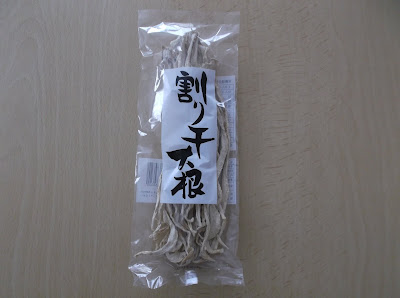I had a considerable amount of tenkasu (also called agedama) in the freezer, and I wanted to use it up before the New Year. I measured it and it was 120 g in total. Tenkasu is a byproduct of making tempura, but you can make tenkasu intentionally, and you can also buy premade tenkasu in a supermarket. I don't remember how many tempura making sessions I did to get this amount of tenkasu. I guess the tenkatsu was a result of making tempura for supper for at least five times.
冷凍庫に天かす(揚げ玉)がかなりあり、新年を迎える前に使い切りたいと思いました。測ると、全部で120 gありました。天かすは天ぷらを作った時にできる副産物ですが、意図的に作ることもできるし、出来合いの天かすをスーパーで買うこともできます。これだけ天かすができるまで何回天ぷらを作ったか覚えていませんが、少なくとも5回は夕飯に天ぷらを作った時にできた天かすだろうと思います。
So, I made humble okonomiyaki for supper last night.
120 g tenkasu
60 g leftover store-bought okonomiyaki mix
120 g komeko (rice flour)
120 g hakurikoko (cake flour)
60 + 120 + 120 = 300 g
1 egg
300 ml water
1 pack dried shrimp
300 g cabbage, coarsely chopped
I made four okonomiyaki, using two 18-cm dia. frying pans.
と言うわけで、昨日の夕飯には質素なお好み焼きを作りました。
天かす 120 g
残っていた市販のお好み焼き粉 60 g
米粉 120 g
薄力粉 120 g
60 + 120 + 120 = 300 g
卵 1個
水 300 ml
キャベツ 粗みじん 300 g
直径18 cmのフライパンを2つ使って、お好み焼きを4つ作りました。
Note: The ratio of (flour + water) to cabbage should be about 1:1, but I made a mistake of mixing the flour + water and cabbage at a ratio of 2:1. I don't know why, but the okonomiyaki turned out fine.
注: (粉+水)とキャベツの割合は、およそ1:1にすべきですが、私は粉+水とキャベツを2:1で混ぜてしまいました。なぜか分かりませんが、お好み焼きはうまくできました。
My portion:
私の分:
It may be hard to see from the photo, but I sprinkled a generous amount of ao nori first, followed by a generous amount of katsuobushi (dried bonito shavings), chuunou sauce, and ketchup. No mayonnaise for me. Humble okonomiyaki by any standard, but I was satisified with it.
写真では見にくいですが、まず青海苔を沢山ふり掛け、それから鰹節を沢山ふり掛け、それから中濃ソースとケチャップを掛けました。私はマヨネーズは使いません。どう見ても、質素なお好み焼きですが、私は満足しました。





















































